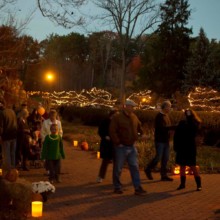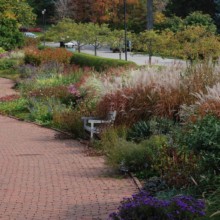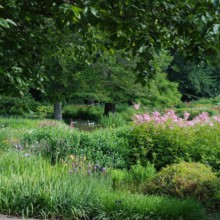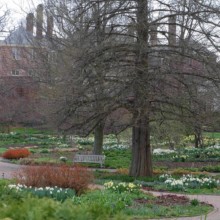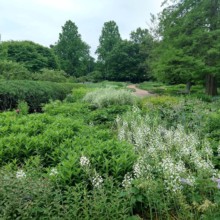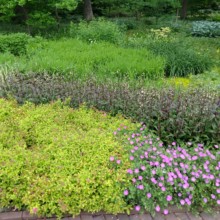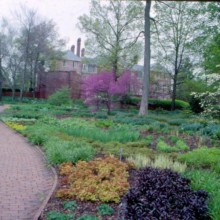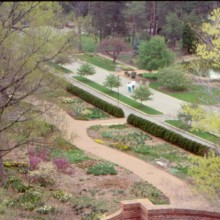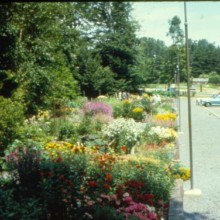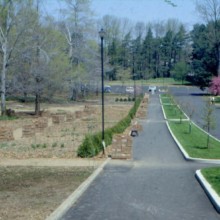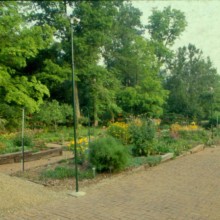New Perennial Gardens
A Perennial Garden began emerging more or less on this site in the 1970’s with railroad tie enclosed raised beds. The late 1980’s saw a new sort of perennial garden created with a wide curvilinear brick path and masses of robust perennials on either side.
A 2015 Master Plan envisioned new pathways to circulate guests and provide greater immersion and interaction with the engaging garden designs resulting in the New Perennial Garden that is a lovely component of the Garden Gateway capital campaign.
Installed in Spring 2020, the new Perennial Garden begins with a Cypress Garden followed by an English-styled Rainbow Garden and pavilion, and then leads to a stylized meadow.
The new Perennial Garden begins in soggy ground under the boardwalk and around a pair of massive bald cypress trees with their trademark “knees”. The boardwalk entrance into the garden spans a daylighted stream and offers a view of moisture loving plants growing under one of the trees. A tiny flood plain adjacent to the stream is planted with hibiscus and sedges. Among the plants growing under the bald cypress tree are two out-of-the-ordinary favorites, the hardy orchid (Bletilla striata) and the big leaved umbrella plant (Darmera peltata).
Walking south toward the garden pavilion are the carefully blended colors and textures of the all new “Rainbow Garden” with over 126 different kinds of shrubs, perennials, and trees, in a design inspired by the late English gardener and writer, Rosemary Verey. The new Perennial Pavilion offers an excuse to linger in the garden where we hope you will take a moment to pause and appreciate the plantings or simply bask in the garden’s ambiance.
At the southern reaches of the Perennial Garden is our idealized meadow. This design is inspired by the ground-breaking, trendsetting, Dutch nurseryman and designer, Piet Oudolf and executed by his protégé, Austin Eischeid. We hope it will grow into an idyllic meadow as we blend perennials from all over the world for not only design affect, but also for ecological compatibility. We are creating a community of plants that will emulate a native community, only “better.”
